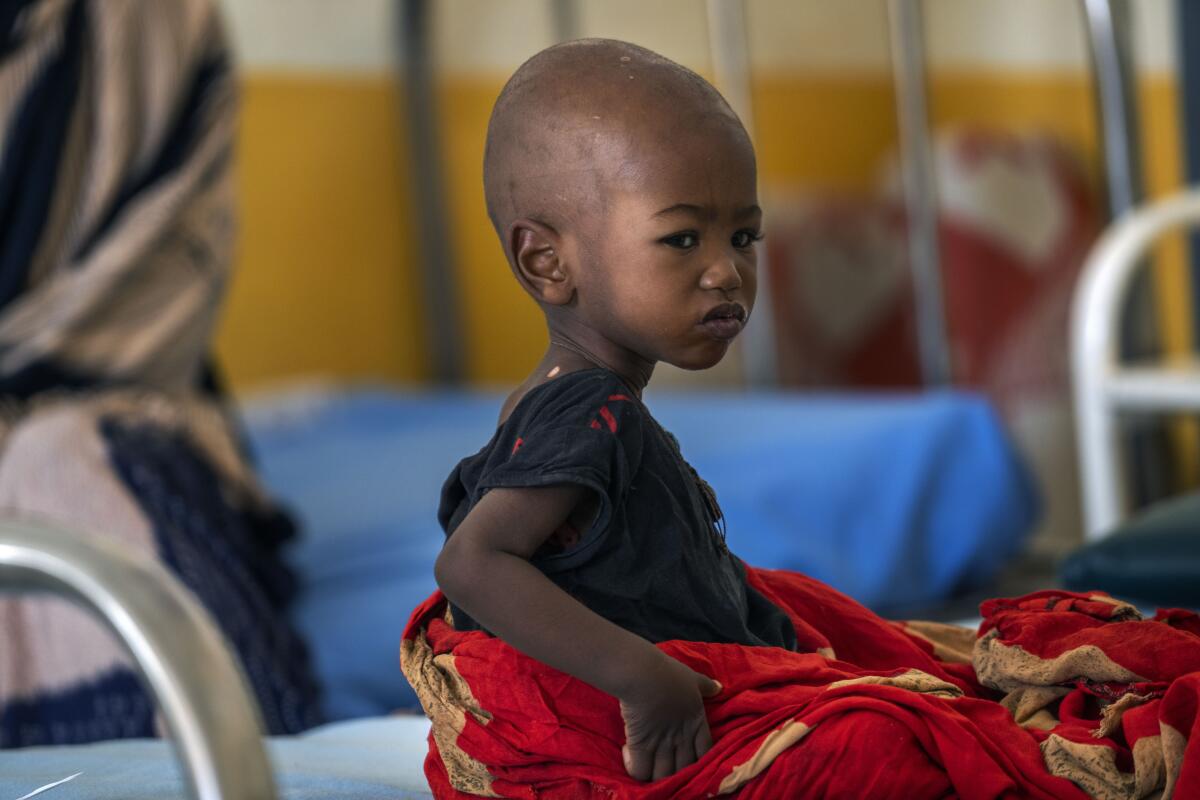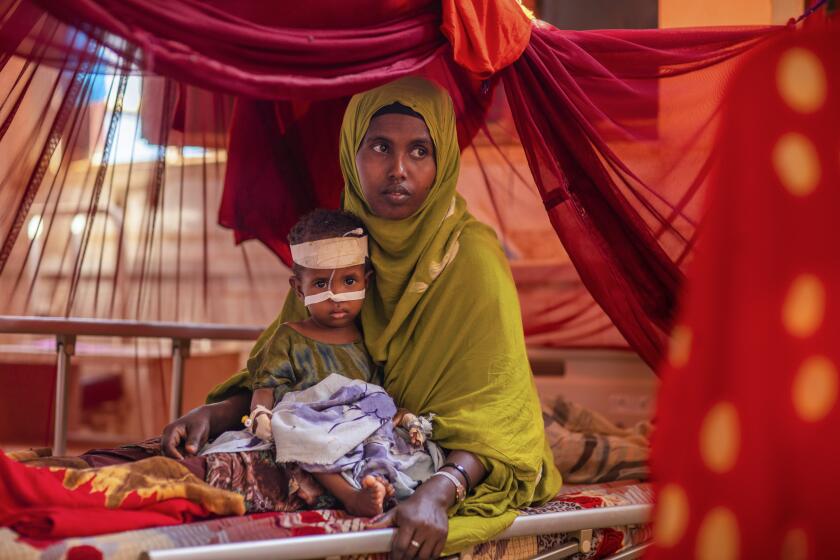A look at famine and its toll as Somalia faces rare, dire declaration

- Share via
DOLLOW, Somalia — Within weeks, a famine could be declared in Somalia, affecting more than 850,000 people in two of the country’s worst drought-affected areas plus thousands of people in displacement camps.
Such a declaration by the United Nations and partners is rare and a sign of the dire consequences from the worst drought in decades in the Horn of Africa.
Here’s a look at famine and its toll.
What does famine mean?
Famine is the extreme lack of food and a significant death rate from outright starvation or malnutrition combined with diseases such as cholera. A declaration means data show more than a fifth of households have extreme food gaps, more than 30% of children are acutely malnourished and more than 2 out of 10,000 people are dying every day.
Formal famine declarations by the U.N. and partners, including food security experts, are rare because data to meet the benchmarks often cannot be obtained because of conflict, poor infrastructure or politics. Governments can be wary of being associated with a term of such grim magnitude.
Somalia is in the grip of the worst drought anyone there can remember, a disaster that has already caused the deaths of thousands of people.
How often does famine occur?
The last significant famine declared anywhere in the world was also in Somalia, in 2011. By then, experts say, the deaths of a quarter-million people were well underway. Half of those dying were children under age 5. The only famine declared since then was in two counties in South Sudan in 2017.
“Tragically, by the time a famine is declared, it’s already too late,” the U.N. World Food Program has said. But a famine declaration is still seen as useful in drawing international aid and attention, even though it carries no binding obligations for the U.N. or member states.
By the time of a famine declaration, already weakened people are succumbing to malnutrition and diseases such as cholera more and more quickly. “Unfortunately, the nature of these crises is such that they go slow and then go very fast,” Sarah Charles, assistant to the humanitarian aid administrator at the U.S. Agency for International Development, told the Associated Press this year.
Agricultural workers in the Horn of Africa and other eastern regions face severe drought amid higher temperatures and less than normal rain this year.
What can famine do to a person?
A vivid description was offered last month by the chief executive of the International Rescue Committee, David Miliband, in a warning about Somalia. “Children with severe malnutrition grow thin, weak and lethargic,” he said. “They have near-constant diarrhea. Their muscles atrophy as all but their body’s most essential systems shut down. On top of the physical symptoms, they emotionally withdraw, becoming disengaged with the world around them. In the longer term, malnutrition can lead to poor immunity to severe infections, stunted growth and restricted ability to learn.”
On a recent AP visit to northern Kenya, which is also affected by the Horn of Africa drought, World Food Program expert Robert Ackatia-Armah noted that when a child slips from moderate to severe malnutrition, their risk of death increases ninefold.
More to Read
Sign up for Essential California
The most important California stories and recommendations in your inbox every morning.
You may occasionally receive promotional content from the Los Angeles Times.












